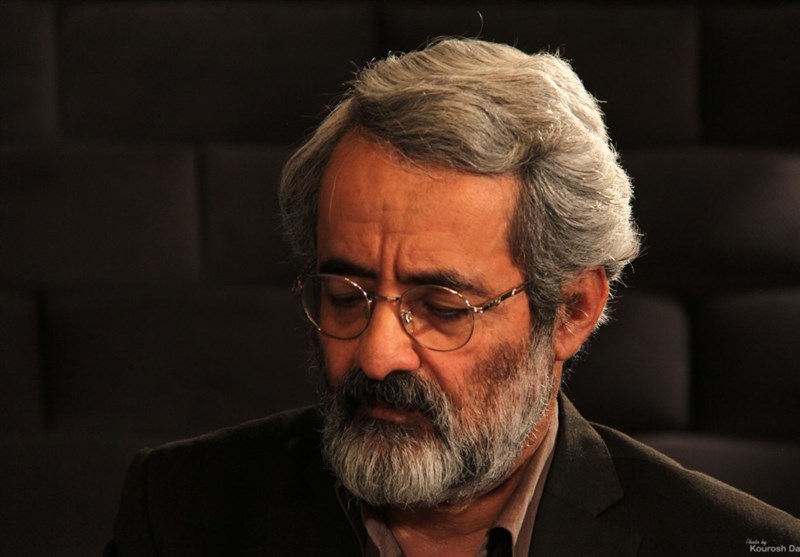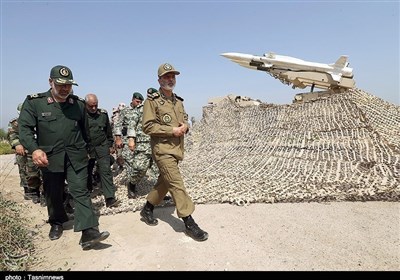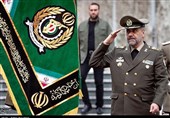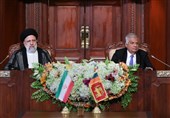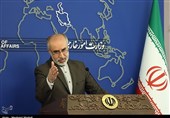An Argument against Ronen Bergman’s 'The Secret War with Iran' – 6
TEHRAN (Tasnim) – Iraq’s long-term objective was to establish a government in the Persian Gulf after overthrowing Iran’s revolutionary government. But, twelve days into the war, the Iraqi army was bogged down in Khuzestan, Ilam and Kermanshah, making it difficult for Saddam to reach its objectives.
Iranian journalist and expert Abbas Salimi Namin has disproved the claims and opinions of Israeli analyst Ronen Bergman in the book ‘The Secret War with Iran’. ‘The Secret War with Iran’, written by renowned Zionist journalist Ronen Bergman, was published in 2008 by Simon & Schuster publishing company in the United States.
Born in 1972, Bergman is a graduate of Tel Aviv University in the Middle East political relations. He is a famous Zionist journalist and analyst in the military and security fields who has worked with Israeli newspapers ‘Haaretz’ and ‘Yedioth Ahronoth’, American dailies and weeklies such as ‘The New York Times’, ‘Newsweek’, ‘The Wall street Journal’, and British media groups including ‘The Guardian’ and ‘The Times’.
Bergman has been interested in topics relating to the enemies of the Zionist regime (particularly Iran, Hezbollah and the Palestinian resistance groups), as well as subjects on the history of the Israeli regime’s assassination operations, which are cited in his recent book ‘Rise and Kill First’.
In an interview with Persian TV channel ‘Iran International’, Bergman has pointed to the Iranian nuclear program and the issues surrounding it -particularly the Zionist regime’s secret attempts to halt the process of nuclear activities in Iran and assassinate Iranian scientists. He has also cited ex-CIA chief Michael Hayden as saying that the assassination of nuclear scientists is the best way to impede Iran’s growing process in that field, and has implicitly held Israel responsible for it.
In the book ‘The Secret War with Iran’, Bergman has written a history of encounters between Iran and the Zionist regime, while the bulk of the book relates to the Lebanese Hezbollah -Iran’s main ally in the battle against the Zionist regime since its formation until the 33-day War- focusing on the role of Martyr Imad Mughniyeh.
His book also includes sections about the final years of the Pahlavi regime and victory of the Islamic Revolution in Iran, short periods of the war imposed by the Ba’thist party of Iraq on Iran (focusing on the McFarlane affair), Iran’s role in supporting the Palestinian groups, and the Iranian nuclear program.
Bergman’s multiple undocumented and untrue comments as well as personal and purposeful analyses (with the main purpose of displaying Israel’s power, specially in a competition with the US) that have repeatedly come in his book make a critical review of the book necessary for Iranian readers.
Director of the Iran History Studies and Compilation Bureau, Abbas Salimi Namin, has written an extensive criticism in a book about ‘The Secret War with Iran’. Born in 1954, Salimi Namin is an experienced journalist and a renowned Iranian researcher in history and political sciences who has published many articles and books.
About ‘The Secret War with Iran’
Part 6:
Chapter 1
Chapter 1 of The Secret War with Iran, like its preface, begins with striking contradictions, which must be mainly attributed to the author’s unquestioned faithfulness to the propagandistic policies of the Zionists ruling occupied Palestine. In their efforts to apply maximum pressure on Iran, these occupiers are truly portraying Tehran as the source of inspiration for resistance against the occupying and racist approach of global Zionism. Authored based on such attitude, The Secret War with Iran too frequently refers to the Islamic Republic of Iran as “one of the biggest political challenges” of modern time. Even in order to make their allegations look more acceptable, they attribute many unreal events to Iran and Islamic Revolution militants. Of course, the reversal of the growing domineering trend of Zionism, under the impact of the victory of national uprising in Iran, as well as the strengthening of resistance of other nations to this ominous phenomenon results from this undeniable fact, in a way that under the present circumstances, migration to this base has been reversed and its future has doubtlessly slipped into ambiguity.
But the temporal contradiction appears when we see that propaganda agents like Bergman, while acknowledging the great development that has resulted in the Islamic Revolution and has destabilized the standing of occupiers of Palestine, raise doubts on the existence of behind-the-scenes communications between Tehran and Tel Aviv in a bid to block Iran’s political use of the capacity of leading all nations against their anti-racism drive.
Although raising such doubts are both in conflict with the extensive and unprecedented enmity and clear alignment of pro-Israeli front against Iran and totally inconsistent with Berman’s objectives in his works, one has to keep in mind that the ruling racists in Palestine fear that their open and all-out enmity with Iran may increase the popularity of this country across the globe. Such popularity has increased the costs of dealing with Tehran, particularly military action. Therefore, convincing American and European public opinion on the grounds that the US views Israel as a strategic asset in curbing an Iranian-inspired resistance is just one side of the coin. The flipside is acknowledging Tehran’s compliance with human principles and values. That explains why they resort to baseless allegations to harm this credibility.
“First by itself and then backed by the US, Israel salvaged the Khomeini government which was driven by Iraqi tanks close to collapse in the 1980s.”
Well mindful of global hatred against them, the Zionists fabricate such baseless allegations in order to damage the standing of the Iranian nation. In order to enlighten the generation that had not seen that period, we have to make clear alignments at the start of the Iraqi imposed war on Iran. For instance, French daily newspaper Le Figaro ran a commentary titled “Backed by US, Saddam Waged War on Iran”. The article was translated into Persian and printed in the Enghelab-e Eslami newspaper run by Abol-Hassan Banisadr on December 8, 1980. “The war between Iran and Iraq had in fact started last June (1980) when Brzezinski traveled to Jordan and met with Saddam [Hussein] at the border. He promised to fully support Saddam and noted that the US would not oppose Iraq’s dream about Shatt al-Arab (Arvandroud River) and the possibility of establishment of a republic in this area (Khuzestan).” (Enghelab-e Eslami, December 8, 1980)
The US support of Saddam’s scheme is highlighted in a Reuters report on the 12th day of the Baathist army’s invasion of Iran. “Foreign diplomats in Tehran believe that Iraq’s undeclared objective in the war is the overthrow of the Government of the Islamic Republic of Iran and the seizure of oil-rich Khuzestan. Iraq’s long-term objective is to establish a government in the Persian Gulf after overthrowing Iran’s revolutionary government. But, twelve days into the war, the Iraqi army is bogged down in Khuzestan, Ilam and Kermanshah, making it difficult for Saddam to reach its objectives…Not only has the Iranian regime not been weakened, but politicians have also set aside their differences and the Armed Forces have found a chance to show their war skills.” (Pars Agency, October 4, 1980)
The Associated Press also analyzed the Iraqi invasion of Iran. “Iraq’s failure in achieving big victories in this war heralds the threat of revival of Islam that triggered Iran’s Revolution.” (Mizan newspaper, October 4, 1980)
Therefore, after it became clear that Saddam could not make the Americans’ dreams come true, the most sophisticated military hardware was given to pro-Baath sheikhs to be delivered indirectly to Saddam. Despite what is said about ceasefire, Washington was not willing to see the invader step back from the occupied portions of the Iranian territory. The Voice of America sheds light on how the US gave direction to Iraq. “American analysts believe that the Iran-Iraq War will grow into a long-lasting battle because Iraq will hold on to the occupied territories while Iranian people will resist based on their nationalist attitudes.” (Enghelab-e Eslami newspaper, quoting VOA, October 4, 1980)
Although only 12 days had just passed since Iraq invaded Iran and there was no bright prospect for the realization of its objectives, Tehran came under pressure from several directions – inspired by the US scheme for Iraq – to agree to ceasefire without any liberation of the territories occupied by the invader: 1. Activation of the Organization of the Islamic Conference (OIC) to invite Iran to accept the ceasefire; 2. Issuance of UN Security Council Resolution on ceasefire; 3. Upgrading Iraq in all aspects to prevent any significant change in the balance of power in Iran’s favor; 4. Closing all channels of delivery of conventional military equipment to Iran, even causing trouble in the black market; 5. Full control of Iran’s movements in the invaded borderlines through sophisticated surveillance systems.
Just several days after Saddam invaded Iran, the US delivered four Airborne Warning and Control System (AWACS) aircraft to Saudi rulers in Riyadh. But due to the sophisticated system of this aircraft, US military was directly involved in its operation in the region. It was decided that Saudi officials share AWACS-gathered data with Saddam. In a deceitful gesture, then US Secretary of State Edmund Muskie claimed that the AWACS delivery to Saudi Arabia should not be seen as anti-Iran move. In a letter to Iran’s Foreign Ministry, he wrote: “The deployment of four AWACS aircraft to Saudi Arabia is merely defensive without any offensive capability.” (VOA, October 3, 1980, Pars Agency news bulletin)
With so much evidence (just part of which cited), how can Bergman expect his readers to accept that the US and Israel had in the first place prevented Iran’s defeat from the invading army of Iraq? They had provoked the invader into attacking Iran, but they found out very soon it was unable to continue the war and they mobilized their regional and international influence to support Iraq either directly or indirectly. If the author’s allegations bore a minimum degree of truth the Americans would accept at least implicitly that Saddam was the aggressor or call on Iraq to retreat to international borders before a ceasefire could be established. But neither at the UN Security Council nor independently, did Washington never raise such an evident requirement for ceasefire because it was doubtlessly an architect of the war on Iran and it could not adopt any stance against its own policy.
Researchers know pretty well that during the first days of Saddam’s invasion, Iran was caught by surprise, but as American experts have acknowledged, Iran’s military changed the battlefield very quickly in its own favor and expressed its firm determination to secure the liberation of occupied territories before any ceasefire talks, which would otherwise be used as a lever of pressure against the Iranians. When documents bear proof to the fact that during the very first days of Saddam’s invasion, the US supplied highly sophisticated equipment like AWACS to Saddam indirectly, how true can the author’s allegations be then? However, Bergman admits in Chapter 8 that even in 1985 when the US undertook to sell some hardware to Iran via dealers in return for Iran negotiating the release of American hostages held in Lebanon, Israel had interfered with this procedure and replaced new hardware with outdated one. This issue will be discussed in details in its own chapter; however, it should be kept in mind that the Zionists and subsequently the Americans never forgot their commitment to Saddam and his regional allies in any period of war. Even during McFarlane’s visit to Iran, as a major political machination to change the direction of the Islamic Revolution and discredit it in the eyes of nations, the Zionists were invisibly present in the process in a bid to prevent any action that might strengthen Iran. Of course Washington had given Tel Aviv carte blanche. For instance, all equipment carried to Tehran by dealers was inspected during a stopover in Israel. The Tower Commission’s report has made it clear that the plane carrying McFarlane had landed in occupied Palestine. Then, in addition to some changes in the cargo, an advisor to Israel’s prime minister had joined the delegation to make sure that the final result of this gesture would not serve Iran.
Bergman explains the Zionists’ high sensitivity to this issue as follows: “Khomeini’s return from exile as the first Leader of the Islamic Revolution in modern history posed a big and unrivaled obstacle to US-Israel common interests and initiatives in the Middle East. Nobody can perceive the blow the Islamic Revolution dealt to US and Israeli military installations and their intelligence organizations and the enmity the new regime showed towards those countries without a brief description of the hidden aspects of these ties. From the first day of the Revolution, Israel tried to build regional alliances with forces hostile to its own enemy, who were mainly Arab nations, based on the principle of ‘the enemy of my enemy is my friend’.” (p. 15)
